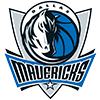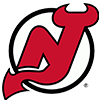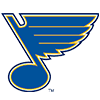The Arizona Diamondbacks have a problem. Make no mistake. It's one of those "good" problems professional baseball clubs love to have. The team has a hot hitting prospect with thunder in his bat. The problem? They have a number of other first basemen in the organization already on the payroll taking places on the major league roster.
Paul Goldschmidt appears to be the first baseman of the Diamondbacks' future.
While he certainly wasn't listed in a prominent position on preseason prospect lists, he has skyrocketed in the organization in a very short amount of time. Goldschmidt's prodigious power is causing the club to seriously consider their options at a very important position. First base in Arizona has probably not been settled and secured since Mark Grace left the organization. Many have tried, and many have departed.
Entering this season, Brandon Allen was viewed as a credible first-base prospect by front office personnel within baseball. Allen was acquired from the White Sox in a trade for pitcher Tony Pena. Pena was highly regarded at the time of the trade, so giving him up for Allen was a big move. Allen was a fifth-round pick of the White Sox and he was seen as a player with good power potential and an ability to adjust to major league pitching.
The Diamondbacks gave Allen some opportunities to win the job at first base or left field, both positions of need for the organization. After spring training this year, Arizona optioned Allen to
The Arizona Diamondbacks have a problem. Make no mistake. It's one of those "good" problems professional baseball clubs love to have. The team has a hot hitting prospect with thunder in his bat. The problem? They have a number of other first basemen in the organization already on the payroll taking places on the major league roster.
Paul Goldschmidt appears to be the first baseman of the Diamondbacks' future.
While he certainly wasn't listed in a prominent position on preseason prospect lists, he has skyrocketed in the organization in a very short amount of time. Goldschmidt's prodigious power is causing the club to seriously consider their options at a very important position. First base in Arizona has probably not been settled and secured since Mark Grace left the organization. Many have tried, and many have departed.
Entering this season, Brandon Allen was viewed as a credible first-base prospect by front office personnel within baseball. Allen was acquired from the White Sox in a trade for pitcher Tony Pena. Pena was highly regarded at the time of the trade, so giving him up for Allen was a big move. Allen was a fifth-round pick of the White Sox and he was seen as a player with good power potential and an ability to adjust to major league pitching.
The Diamondbacks gave Allen some opportunities to win the job at first base or left field, both positions of need for the organization. After spring training this year, Arizona optioned Allen to Triple-A Reno and announced that former Yankees prospect Juan Miranda would get the "majority" of playing time at first base. Then the Diamondbacks did the same thing to Miranda that Cleveland did to Matt LaPorta. They imported Russell Branyan to play some at first base. They liked the potential power Branyan could bring to Chase Field, but that's the quality they liked about Miranda as well. Power. Diamondbacks general manager Kevin Towers became familiar with Miranda during their days with the Yankees. He wanted Miranda and the veteran Branyan on his Arizona club. Miranda plays better defense than Branyan, but Branyan can bring rain with some of his towering home runs. General managers have been signing Branyan to contracts year in and year out for nearly a decade. Each GM probably thinks his team will be the final stop for the big lefty hitter. They're all hoping for the one massive home-run season they feel certain Branyan has stored away somewhere in his bats.
As if Branyan and Miranda wouldn't be enough competition Allen, the D-Backs also signed veteran Xavier Nady to play first and left field. Without much explanation, Allen was sent to Reno leaving Miranda, Branyan and Nady on the big league roster to share and split time at first base. It appears now that Allen was not in the plans of the Diamondbacks as they entered spring training.
Nady is a professional hitter, but since his arm injury, he can't throw. Even first basemen have to be able to throw. The throwing problem is even worse when Nady plays left field. And his problems intensify when he doesn't produce at the plate. Nady's signing was greatly influenced by his ability to bring a veteran presence to a young and unsettled clubhouse. Nonetheless, he's been taking playing time from both Miranda and Branyan, starting mostly against left-handed pitchers.
Including Branyan, Miranda and Nady the Diamondbacks have a bit more than $3 million tied up in first basemen on the 25-man roster. That may not seem like much, but for the Diamondbacks it's significant. This was to be the season the club would bring order to the payroll and low-cost veterans would be mixed in with higher priced players such as Kelly Johnson, Joe Sunders, Stephen Drew, Chris Young, and Justin Upton. Players like Melvin Mora, Willie Bloomquist, Geoff Blum, Henry Blanco and Xavier Nady were signed at very reasonable contract rates.
And now, to complicate the first-base situation even more, Goldschmidt has surfaced as a legitimate power hitting option. Let's trace Goldschmidt's path in the Diamondbacks' organization.
Goldschmidt is a 23-year-old, 6-foot-3, 245-pound first baseman. He hits and throws right-handed. Born in Wilmington, Delaware, Goldschmidt went to high school at The Woodlands in Texas. He played football in junior high school, but Goldschmidt concentrated on baseball at The Woodlands. He had a major growth spurt in his freshman year and since that time he has become a feared impact type hitter.
It's important to note that in the 49th round of the 2006 amateur draft, The Dodgers drafted Goldschmidt out of high school. A very good student, Goldschmidt decided that he wanted to go to college and play baseball while working on a degree in economics. He went to Texas State University in San Marcos. At Texas State, Goldschmidt set school records for home runs and RBI that remain today.
He made the dean's list and as a scholar/athlete he gained the respect of his teammates and scouts as he raked at the plate and did exceptionally well in the classroom.
Goldschmidt decided to play summer baseball in Alaska for the Anchorage Bucs in the Alaskan Baseball League. With constant daylight in Alaska, Goldschmidt had the opportunity to enjoy the fresh air of Alaska and all it had to offer. Had his name not been called in the major league draft, Goldschmidt probably would have returned to Anchorage for another summer.
When the Diamondbacks selected Goldschmidt with the 246th pick in the eighth round of the 2009 amateur draft, he decided to sign his first professional baseball contract. He received a $95,000 bonus and immediately bought an engagement ring for his future wife.
Goldschmidt was assigned to Missoula in the Pioneer League for the remainder of the 2009 season. In 74 games, he hit 18 homers and had a batting average of .334 in 287 at-bats. His overall line was .334/.408/.638. The 1.046 OPS certainly raised some eyebrows. He struck out 74 times while accepting 36 walks. Goldschmidt made a very good impression in Rookie League baseball.
Last season, Goldschmidt built on his power hitting rookie season by hitting 35 home runs at High A Visalia in the California League. He also knocked in 108 runs and had a line of .314/.384/.606. He scored 103 runs and hit 42 doubles. Without a doubt, Goldschmidt was drawing attention to himself with a loud and lethal bat. However, he didn't always make contact. In fact, Goldschmidt struck out 161 times. Some people felt that in the past, Goldschmidt was basically a "mistake" hitter. He would cream pitches that were within his "hot" hitting zone. However, he was swinging at high fastballs that pitchers learned to elevate when Goldschmidt couldn't hold back. "Climbing the ladder" was a successful tactic for opposing pitchers to use against the power hitter with the Bunyan look. Goldschmidt had earned a reputation of having a "slow bat" that he would work hard to correct. He also had trouble with sliders and breaking balls outside the strike zone. Not unlike many power hitters, Goldschmidt was known to get himself out by lunging at pitches out of the strike zone. Despite all those "holes" in his mechanics and swing, Goldschmidt was a major force in the California League. When pitchers made mistakes, Goldschmidt didn't miss. His challenge going forward was to correct the mechanical flaws and become a player capable of hitting higher quality pitching.
"Holes" in his swing or not, Goldschmidt was named the California League's Most Valuable Player in 2010. He was also the Diamondbacks Position Player of the Year. He was beginning to make some noise with his bat.
Currently, Goldschmidt is giving pitchers nightmares at Double-A Mobile. He has shown improvement in all phases of his hitting mechanics. As of this writing, Goldschmidt is hitting .336/.468/.736 with 13 homers and 33 RBI in 31 games (110 at-bats). The approach at the plate is much improved, as he's drawn more walks (28) than he's stuck out (19). He is soaking in the advice and training being offered by the organizational staff.
I witnessed the power and the mechanical adjustments first hand during spring training. Goldschmidt's hitting was part of the daily buzz in Arizona training camps. Other teams and scouts from other clubs were taking notice. But there is more to playing baseball than hitting home runs. Ask Jack Cust. On occasion, Goldschmidt is compared to him. Spring training in the Arizona air is one thing, being able to sustain the improvement is yet another. And that's just what Goldschmidt has shown this season. Improvement in his hitting technique.
Since spring training, scouts and team coaches have seen improvement in Goldschmidt's approach and mechanics at the plate. Goldschmidt has taken the instruction regarding making contact seriously. He has worked hard to cut down on the strikeouts. In addition, now Goldschmidt has the ability to hit the ball out of the park to dead center field as well as to his left field pull side. That wasn't always the case. In the past, he was a little late on good fastballs and he hit many of his homers to right field. He was having trouble with inside pitches early in his career but he's worked on his mechanics and has improved his ability to react when he's busted inside. When everything is considered, Goldschmidt has made himself into a much-improved contact hitter. He has strong hands and the strength in his upper body and forearms helps generate his power. Goldschmidt has a history of being extremely dangerous against left-handed pitching. That could lead to him becoming a platoon first baseman with a left-handed hitting partner such as Miranda. To me, that is a very logical and real possibility for the Diamondbacks as they move forward. The Diamondbacks may indeed have a combination of players that could excel and wreck havoc in the hitter friendly Chase Field. Miranda and Goldschmidt could form a long-term tandem that finally solves the gaping hole at first base.
Defensively, Goldschmidt is average at best and often viewed as below average by many. He is slow afoot and he is not very athletic. He doesn't have soft hands or quick feet, but is able to get the job done on average ground ball chances. His defense will likely be serviceable at the major league level - better than Branyan, but not as good as Miranda.
As I've indicated in other profiles, if a professional baseball player is blessed with only one tool, it is best for the tool to be power hitting. That is Goldschmidt's main ticket to the major leagues. But as of this time in his career, he is showing he can also hit for average. So in effect, he has two very measurable tools. He can hit for power and he can hit for average. What club wouldn't want that type player in the middle of their lineup?
So what is the outlook for Goldschmidt? I don't think the club will move him to the major leagues until later this season. Perhaps not until September, if then. The team has become dedicated to bringing their finances and player payroll to a manageable figure. They want to be prepared financially when prospects such as Jarrod Parker, Bobby Borchering, A.J. Pollock, Marc Krauss, Tyler Skaggs and of course Goldschmidt are calledon to change the overall look of the team. In the past, the Diamondbacks have promoted players prior to the completion of their development. Players such as Justin Upton, Stephen Drew and Mark Reynolds were promoted early and became very expensive when the team chose to offer them long-term contracts to buy out arbitration years. It's unlikely Kevin Towers will follow that path. He will likely allow players to complete their development and begin their major league salary schedules according to a pre-conceived conventional salary plan. After all, Towers was hired to bring stability to the franchise - especially to the payroll and the clubhouse. That's an important component to any discussion regarding the promotion of prospects. Organizational stability.
I also believe Towers wants to provide Miranda a clear opportunity to show the club what he brings to the lineup. Unless he plays regularly, the team will not know what they have or don't have in Miranda moving forward. Certainly, Branyan can be a one-year rental. The same for Nady, and booth may be jettisoned at the end of the year or sooner. Enter Goldschmidt. I see him taking the place of Branyan, but from the right side of the plate. The question? When will Branyan get released? I just don't think it will happen until late in the second half or until after the season. If Branyan or Miranda get hurt, that's a different story. Perhaps the D-Backs would turn to Goldschmidt then, but it's far from guaranteed. Remember that Allen still looms in the organization and he can flash some pretty good minor league numbers. However, I don't think he'll be much of a factor to block Goldschmidt if Goldschmidt continues to impress. There are just too many first-base candidates in the system, and Allen could be used as a trade chip. But as of this writing, he's still in the picture at Triple-A Reno.
Finally, it must be remembered that the Diamondbacks have two picks in the top seven of the upcoming June amateur draft. They have pick No. 3 and pick No. 7. The seventh pick is compensation from the team's inability to sign 2010 first-round selection Barrett Loux, who was injured. The two top draft picks this year will be expensive. Money for the draft has already been budgeted. However, should the prices skew upwards, the team will have little choice but to pay. They have to make up for the missed 2010 first-round selection. Depending on the language of the new basic agreement, this may be the last year of the amateur draft in its current form. The Diamondbacks have to get it right. If they are to progress, there is little to no room for error or failure in the draft.
For me, it all adds up to Goldschmidt being on a faster track to the big leagues than anticipated. It means he may be the first baseman of the future; at least in a platoon with Juan Miranda. But Goldschmidt still must convince some that he is closing the holes in his swing and mechanics. He must continue to hit with authority and show that he can hit top quality pitching. He will also have to show that he can play quality major league defense.
Goldschmidt still hasn't seen any time at Triple-A. It is most probable that Goldschmidt will make a stop at Reno in the Pacific Coast League before he ends up playing in Phoenix. That would likely be the completion of his development. That could happen in the second half of this season or sooner. Such a stop in his development will allow him to continue to get important at-bats against quality pitching.
At one point, Goldschmidt was just another prospect in the Diamondbacks' organization. He was seen as a power-hitting, limited tool player with a chance to someday help the major league club. His seasons at Visalia and now at Mobile are helping to change his status and he is climbing up the prospect charts. If he continues on his current pace at Mobile, he will force the issue for Towers and the team's brass. The D-Backs may truly have struck gold. The question is, when will it be mined?
Follow me on Twitter @BerniePleskoff
Bernie Pleskoff is a former pro scout for the Houston Astros and Seattle Mariners. He is a graduate of the Major League Scouting Bureau's Scout School in Phoenix.





















